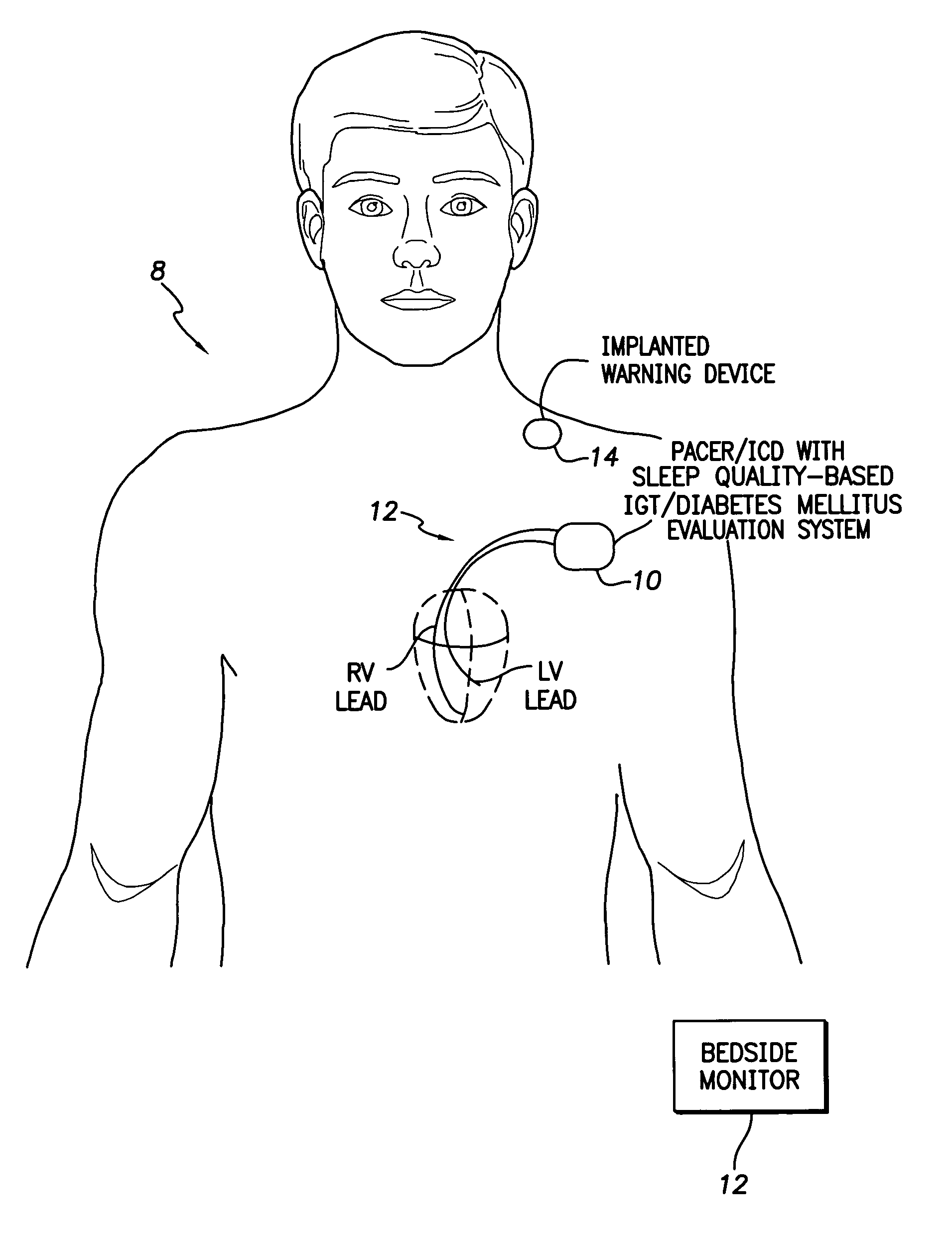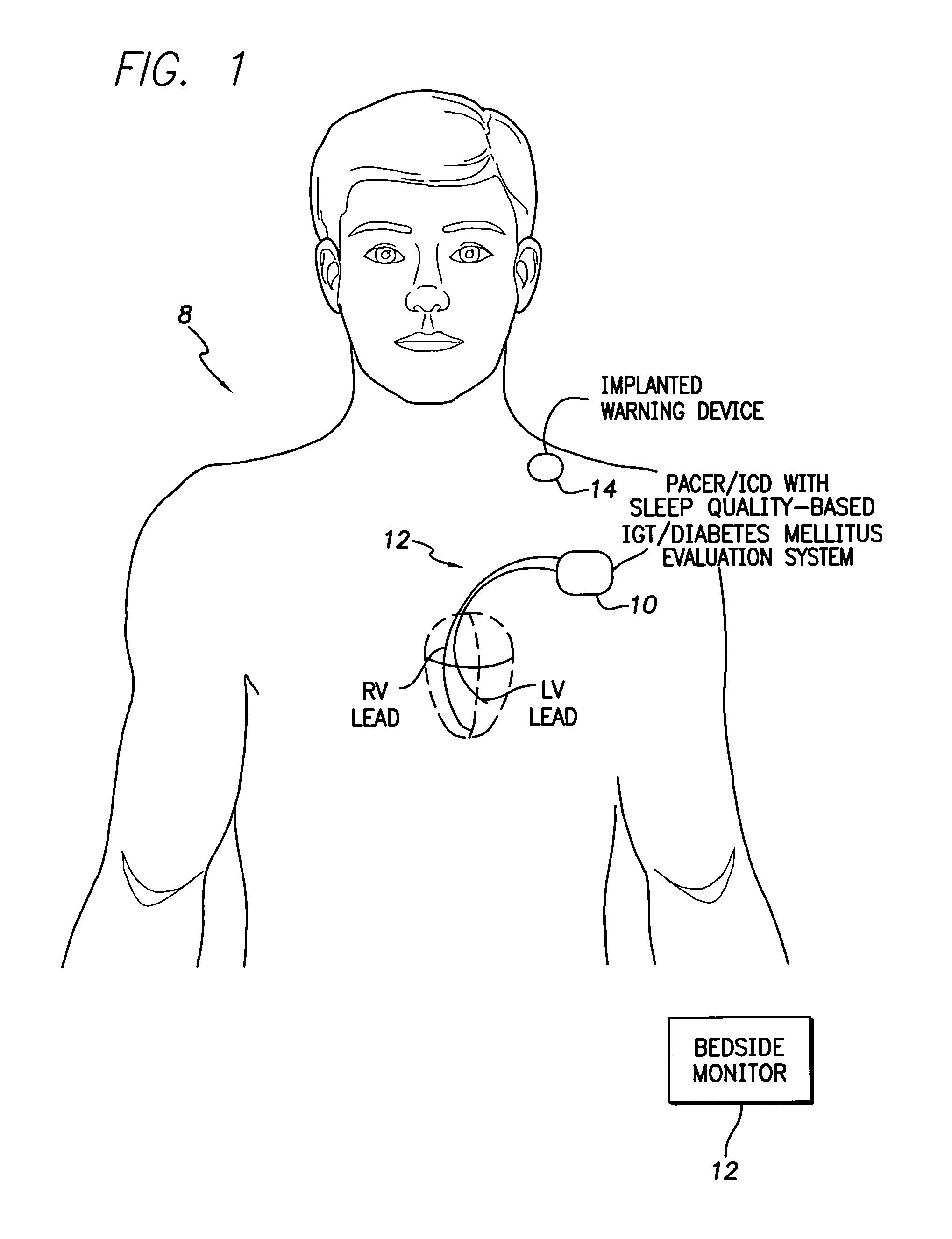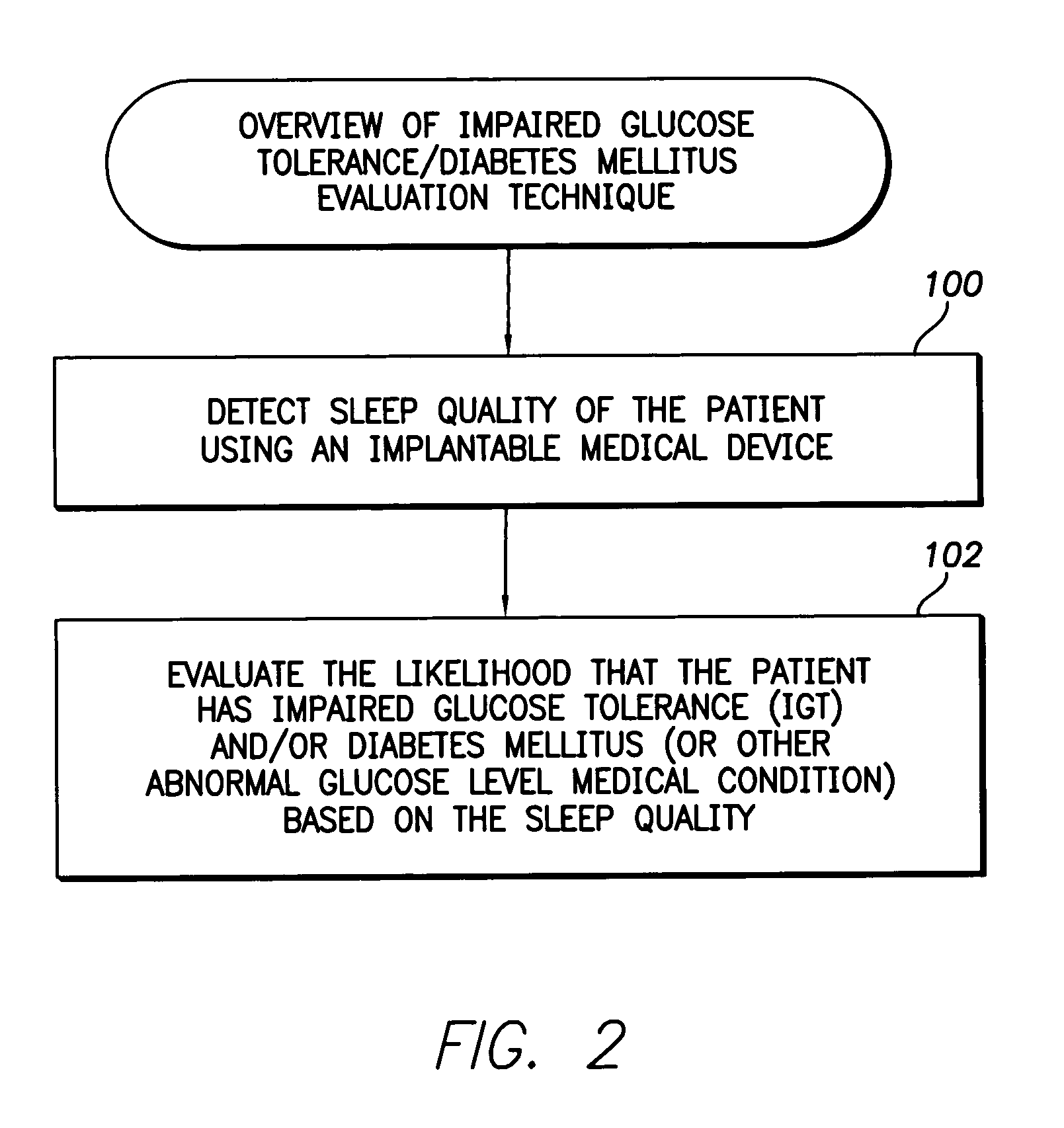System and method for evaluating impaired glucose tolerance and diabetes mellitus within a patient using an implantable medical device
a medical device and impaired glucose tolerance technology, applied in the field of implantable medical devices, can solve the problems of increased mortality risk and decrease in overall sleep quality of patients, and achieve the effect of more robust evaluation procedures
- Summary
- Abstract
- Description
- Claims
- Application Information
AI Technical Summary
Benefits of technology
Problems solved by technology
Method used
Image
Examples
Embodiment Construction
[0025]The following description includes the best mode presently contemplated for practicing the invention. The description is not to be taken in a limiting sense but is made merely for the purpose of describing the general principles of the invention. The scope of the invention should be ascertained with reference to the issued claims. In the description of the invention that follows, like numerals or reference designators will be used to refer to like parts or elements throughout.
Overview of Implantable Medical System
[0026]FIG. 1 illustrates an implantable medical system 8 having a pacer / ICD 10 equipped to evaluate the likelihood that the patient has IGT or diabetes mellitus based on sleep quality of the patient. Briefly, overall sleep quality of the patient is automatically detected by the pacers / ICD based on an analysis of electrical signals received from pacing leads 12 and from various sensors and detectors to be described below. (In FIG. 1, only two exemplary leads are shown;...
PUM
 Login to View More
Login to View More Abstract
Description
Claims
Application Information
 Login to View More
Login to View More - R&D
- Intellectual Property
- Life Sciences
- Materials
- Tech Scout
- Unparalleled Data Quality
- Higher Quality Content
- 60% Fewer Hallucinations
Browse by: Latest US Patents, China's latest patents, Technical Efficacy Thesaurus, Application Domain, Technology Topic, Popular Technical Reports.
© 2025 PatSnap. All rights reserved.Legal|Privacy policy|Modern Slavery Act Transparency Statement|Sitemap|About US| Contact US: help@patsnap.com



